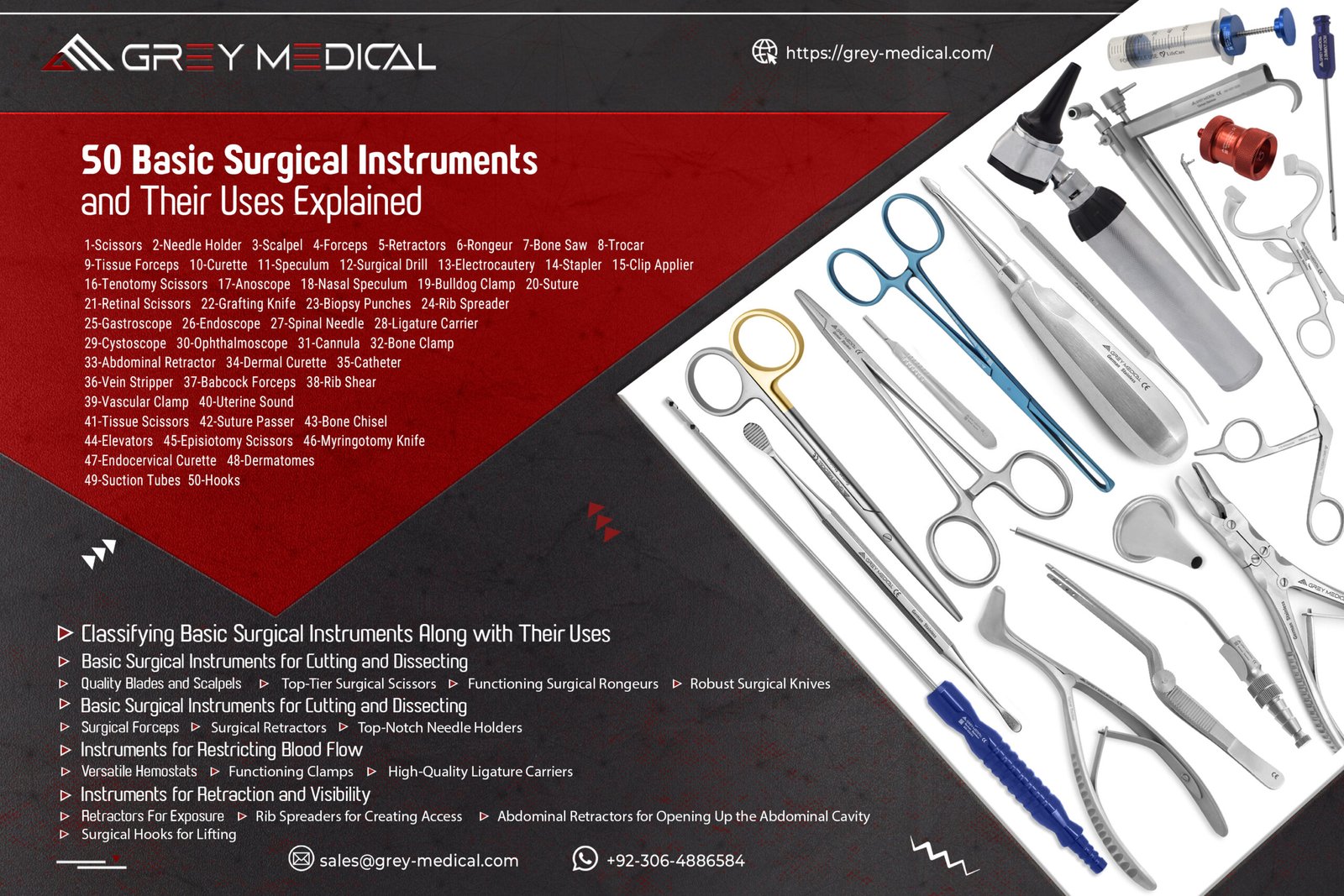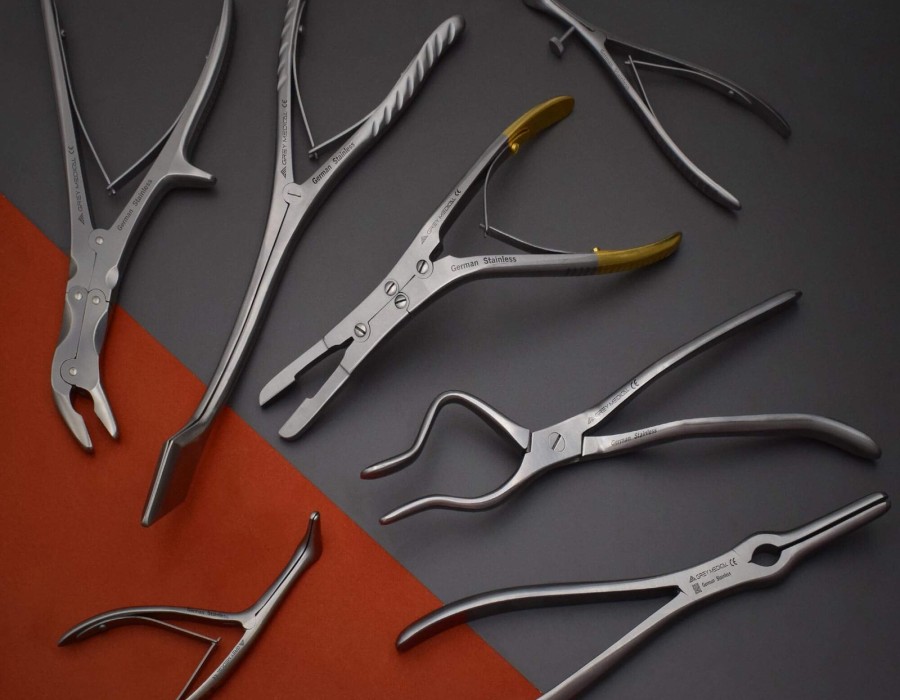The operating room is a stage where precision and expertise come together to save lives and improve patient outcomes. Central to every procedure is a vast array of specialized tools. Understanding the different types of surgical instruments is fundamental for any medical professional, as each is designed for a specific function, from making an initial incision to closing the final suture. These tools are extensions of a surgeon's hands, enabling them to perform complex tasks with accuracy and control.

Cutting and Dissecting Instruments
The first step in most surgical procedures involves making an incision. For this, surgeons rely on cutting and dissecting instruments. The most recognizable of these is the scalpel, which consists of a reusable handle and a disposable blade. Blades come in various sizes and shapes, each suited for different types of tissue and incision lengths. Scissors are also crucial, with types like Mayo scissors for cutting heavy tissue and Metzenbaum scissors for more delicate dissection. These tools allow surgeons to separate and remove tissue with minimal damage to surrounding areas.
Grasping and Holding Instruments
Once an incision is made, surgeons need to manipulate tissues, organs, and other materials. Grasping and holding instruments, often called forceps, are essential for this purpose. They come in two main varieties: atraumatic forceps, which hold delicate tissue without causing damage, and toothed forceps, which provide a firm grip on denser tissues. Clamps, such as hemostats, are another vital category used to control bleeding by clamping blood vessels. The design of these surgical instruments ensures a secure hold, giving surgeons the stability needed to operate effectively.
Retractors: Providing a Clear View
Visibility is critical during any operation. Surgical Retractors are instruments designed to hold an incision open or to hold back tissues and organs, providing the surgeon with a clear view of the surgical site. Retractors can be handheld, requiring an assistant to hold them in place, or self-retaining, with a mechanism that keeps them open automatically. From small, delicate skin hooks to large abdominal retractors, these tools are indispensable for creating a safe and accessible operating field. The right retractor ensures that the surgical team can work efficiently and safely.
Suturing and Stapling Instruments
After the main procedure is complete, the surgeon must close the incision. This is accomplished using suturing or stapling instruments. Needle holders, for example, are used to grasp and guide the suturing needle through tissue with precision. The design of their jaws ensures a firm grip on the needle, preventing it from slipping. In some cases, surgical staplers are used as a faster alternative to sutures for closing skin or connecting internal tissues. The choice between these methods depends on the type of tissue and the specific procedure. High-quality surgical instruments are paramount for ensuring that wounds heal properly.
At GreyMedical®, a privately owned medical technology company, we are dedicated to innovation and excellence in the craft of surgical instruments. We understand that the quality of these tools directly impacts surgical success and patient recovery. The careful design and manufacturing of each instrument, from scalpels to needle holders, reflect a commitment to supporting surgeons in their life-saving work. The world of surgical instruments is diverse and highly specialized, with each tool playing a critical role in the intricate dance of surgery.





Comments